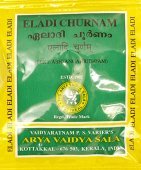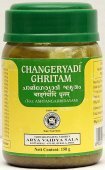Mamsi, Māṃsī, Mansi: 12 definitions
Introduction:
Mamsi means something in Hinduism, Sanskrit, Jainism, Prakrit, Hindi, biology. If you want to know the exact meaning, history, etymology or English translation of this term then check out the descriptions on this page. Add your comment or reference to a book if you want to contribute to this summary article.
In Hinduism
Ayurveda (science of life)
Cikitsa (natural therapy and treatment for medical conditions)
Source: Wisdom Library: Ayurveda: CikitsaMāṃsī (मांसी) is a Sanskrit word referring to the “Indian spikenard”, flowering plant/herb from the Caprifoliaceae (honeysuckle) family, and is used throughout Ayurvedic literature such as the Caraka-saṃhitā. The official botanical name of the plant is Nardostachys jatamansi and is commonly known in English as “spikenard” or “muskroot”. It grows in the alpine Himalayas on medium through high altitudes. It is derived from the Sanskrit word māṃsa, which, when literally translated means “flesh, meat”. It has been used since ancient times as as a perfume. In traditional Indian medicine, Bimbī is used as part of various recipes and pastes.
This plant (Māṃsī) is possibly identified as a medicine used for the treatment of all major fevers, as described in the Jvaracikitsā (or “the treatment of fever”) which forms the first chapter of the Sanskrit work called Mādhavacikitsā. In this work, the plant is referred to as Bālaka.
Kalpa (Formulas, Drug prescriptions and other Medicinal preparations)
Source: Shodhganga: Edition translation and critical study of yogasarasamgrahaMāṃsī (मांसी) refers to the medicinal plant known as “Nardostachys grandiflora DC.” and is dealt with in the 15th-century Yogasārasaṅgraha (Yogasara-saṅgraha) by Vāsudeva: an unpublished Keralite work representing an Ayurvedic compendium of medicinal recipes. The Yogasārasaṃgraha [mentioning māṃsī] deals with entire recipes in the route of administration, and thus deals with the knowledge of pharmacy (bhaiṣajya-kalpanā) which is a branch of pharmacology (dravyaguṇa).
Veterinary Medicine (The study and treatment of Animals)
Source: Asian Agri-History: Paśu Āyurvēda (Veterinary Medicine) in GaruḍapurāṇaMāṃsī (मांसी) refers to Nardostachys jatamansi, and is used in the application of “errhines” (nasya), according to sections on the treatment of Horses (Gajāyurveda or Aśvāyurveda) in the Garuḍapurāṇa.—In certain afflictions when nasya (errhines) become necessary either the juice of Mātuluṅga (Citrus medica) or that of Māṃsī (Nardostachys jatamansi) should be used for that purpose. The first day's dosage is two pala (48gms) weight. Every day it has to be increased by a pala. The maximum for a first class horse is eighten pala. In the average class it is fourteen and for the lowest class of horse it is eight pala weight. Errhines are not to be administered in autumn or summer seasons.
Toxicology (Study and Treatment of poison)
Source: Shodhganga: Kasyapa Samhita—Text on Visha ChikitsaMāṃsī (मांसी) refers to a herbal ingredient which is included in a (snake) poison antidote recipe, according to the Kāśyapa Saṃhitā: an ancient Sanskrit text from the Pāñcarātra tradition dealing with both Tantra and Viṣacikitsā—an important topic from Āyurveda which deals with the study of Toxicology (Viṣavidyā or Sarpavidyā).—In the Añjana or Collyrium segment of the eighth Adhyāya, Kāśyapa prescribes eight types of permutation and combination of herbs that effectively arrest poison. According to Kāśyapasaṃhitā (verse VIII.32)—“Powdered Māṃsī, sandalwood, salt, Kṛṣṇayaṣṭi or Tulasī, petals of Lotus made into collyrium with urine promptly awakens one sleeping under the influence of poison”.

Āyurveda (आयुर्वेद, ayurveda) is a branch of Indian science dealing with medicine, herbalism, taxology, anatomy, surgery, alchemy and related topics. Traditional practice of Āyurveda in ancient India dates back to at least the first millenium BC. Literature is commonly written in Sanskrit using various poetic metres.
Jyotisha (astronomy and astrology)
Source: Wisdom Library: Brihat Samhita by VarahamihiraMāṃsī (मांसी) refers to “Jaṭāmāṃsī” (a medicinal grass), according to the Bṛhatsaṃhitā (chapter 16) (“On the planets—graha-bhaktiyoga”), an encyclopedic Sanskrit work written by Varāhamihira mainly focusing on the science of ancient Indian astronomy astronomy (Jyotiṣa).—Accordingly, “[...] Jupiter also presides over elephants, horses, priests, rulers, ministers, marriages and health; over mercy, truthfulness, cleanliness, religious observances; over learning, gifts and charity; over citizens, rich men, grammarians, Vedic students, sorcerers, lawyers, the ensigns of royalty—the umbrella, the flag-staff, the Cāmara and the like; over Śaileyaka, Mānsī, Tagara, Kuṣṭha, quicksilver, salt, beans, sweet flavour, wax and Coraka”.

Jyotisha (ज्योतिष, jyotiṣa or jyotish) refers to ‘astronomy’ or “Vedic astrology” and represents the fifth of the six Vedangas (additional sciences to be studied along with the Vedas). Jyotisha concerns itself with the study and prediction of the movements of celestial bodies, in order to calculate the auspicious time for rituals and ceremonies.
Biology (plants and animals)
Source: Wisdom Library: Local Names of Plants and DrugsMansi in the Hindi language is the name of a plant identified with Valeriana jatamansi Jones from the Caprifoliaceae (Honeysuckle) family having the following synonyms: Valeriana wallichii, Valeriana harmsii, Valeriana mairei. For the possible medicinal usage of mansi, you can check this page for potential sources and references, although be aware that any some or none of the side-effects may not be mentioned here, wether they be harmful or beneficial to health.

This sections includes definitions from the five kingdoms of living things: Animals, Plants, Fungi, Protists and Monera. It will include both the official binomial nomenclature (scientific names usually in Latin) as well as regional spellings and variants.
Languages of India and abroad
Sanskrit dictionary
Source: DDSA: The practical Sanskrit-English dictionaryMāṃsī (मांसी).—Nardostachys Jatāmansi (jaṭāmāṃsī).
See also (synonyms): māṃsikā, māṃsinī.
Source: Cologne Digital Sanskrit Dictionaries: Monier-Williams Sanskrit-English Dictionary1) Māṃsī (मांसी):—[from māṃsa > māṃs] a f. Nardostachys Jatamansi, [Varāha-mihira; Suśruta]
2) [v.s. ...] = kakkolī, f.; = māṃsa-cchadā, [cf. Lexicographers, esp. such as amarasiṃha, halāyudha, hemacandra, etc.]
3) Māṃsi (मांसि):—[from māṃs] m. sperm
4) [v.s. ...] mfn. having the smell of sperm, [cf. Lexicographers, esp. such as amarasiṃha, halāyudha, hemacandra, etc.]
5) Māṃsī (मांसी):—[from māṃs] b f. Nardostachys Jatamansi, [cf. Lexicographers, esp. such as amarasiṃha, halāyudha, hemacandra, etc.]
Source: DDSA: Paia-sadda-mahannavo; a comprehensive Prakrit Hindi dictionary (S)Māṃsī (मांसी) in the Sanskrit language is related to the Prakrit word: Maṃsī.
Sanskrit, also spelled संस्कृतम् (saṃskṛtam), is an ancient language of India commonly seen as the grandmother of the Indo-European language family (even English!). Closely allied with Prakrit and Pali, Sanskrit is more exhaustive in both grammar and terms and has the most extensive collection of literature in the world, greatly surpassing its sister-languages Greek and Latin.
Hindi dictionary
Source: DDSA: A practical Hindi-English dictionaryMansi in Hindi refers in English to:—(a) mental, psychic..—mansi (मानसी) is alternatively transliterated as Mānasī.
...
Prakrit-English dictionary
Source: DDSA: Paia-sadda-mahannavo; a comprehensive Prakrit Hindi dictionaryMaṃsī (मंसी) in the Prakrit language is related to the Sanskrit word: Māṃsī.
Prakrit is an ancient language closely associated with both Pali and Sanskrit. Jain literature is often composed in this language or sub-dialects, such as the Agamas and their commentaries which are written in Ardhamagadhi and Maharashtri Prakrit. The earliest extant texts can be dated to as early as the 4th century BCE although core portions might be older.
Kannada-English dictionary
Source: Alar: Kannada-English corpusMāṃsi (ಮಾಂಸಿ):—[noun] the plant Nardostachys jatamansi of Valerianaceae family that yield a fragrant ointment.
Kannada is a Dravidian language (as opposed to the Indo-European language family) mainly spoken in the southwestern region of India.
See also (Relevant definitions)
Starts with: Mamsika, Mamsikushthadi, Mamsini, Mamsiy, Mamsiya, Mamsiyate.
Ends with: Abhramamsi, Akashamamsi, Gandhamamsi, Jatamamsi, Kadujatamamsi, Laghumamsi, Mahamamsi, Nardostachys jatamansi, Parivimamsi, Samamshi, Svadumamsi, Takkivimamsi, Vimamsi.
Full-text (+40): Jatamamsi, Akashamamsi, Abhramamsi, Gandhamamsi, Mamsika, Manasi, Mamsini, Mamici, Krishnajata, Svadumamsi, Laghumamsi, Jatavati, Mahamamsi, Mams, Khasambhava, Tapasi, Mamsa, Nardostachys jatamansi, Tapasvini, Shakuladani.
Relevant text
Search found 17 books and stories containing Mamsi, Māṃsī, Māṃsi, Māmsi, Maṃsī, Mansi; (plurals include: Mamsis, Māṃsīs, Māṃsis, Māmsis, Maṃsīs, Mansis). You can also click to the full overview containing English textual excerpts. Below are direct links for the most relevant articles:
Garga Samhita (English) (by Danavir Goswami)
Verse 4.19.56 < [Chapter 19 - A Thousand Names of Srī Yamunā]
Cosmetics, Costumes and Ornaments in Ancient India (by Remadevi. O.)
2.11. Pharmaceutical use of Incense < [Chapter 1 - Cosmetics]
2.10. Pharmaceutical use of Powders < [Chapter 1 - Cosmetics]
1. Materials for Cosmetics (Introduction) < [Chapter 1 - Cosmetics]
The Garuda Purana (by Manmatha Nath Dutt)
Chapter CCIII - Various other medicinal Recipes (continued) < [Dhanvantari Samhita]
Chapter CCXVII - Various Recipes for the cure of sterility, virile impotency, etc. < [Dhanvantari Samhita]
Chapter CXCIX - Various other medicinal Recipes < [Dhanvantari Samhita]
Rasa Jala Nidhi, vol 4: Iatrochemistry (by Bhudeb Mookerjee)
Part 11 - Treatment of Piles (10): Tiksna-mukha rasa < [Chapter V - Piles]
The Agni Purana (by N. Gangadharan)
Chapter 224 - Duties of a King in the Harem (antaḥpura)
Chapter 265 - The sacred bathing of the deities (dikpāla-snāna)
Sushruta Samhita, Volume 5: Kalpasthana (by Kaviraj Kunja Lal Bhishagratna)
Related products
(+11 more products available)





